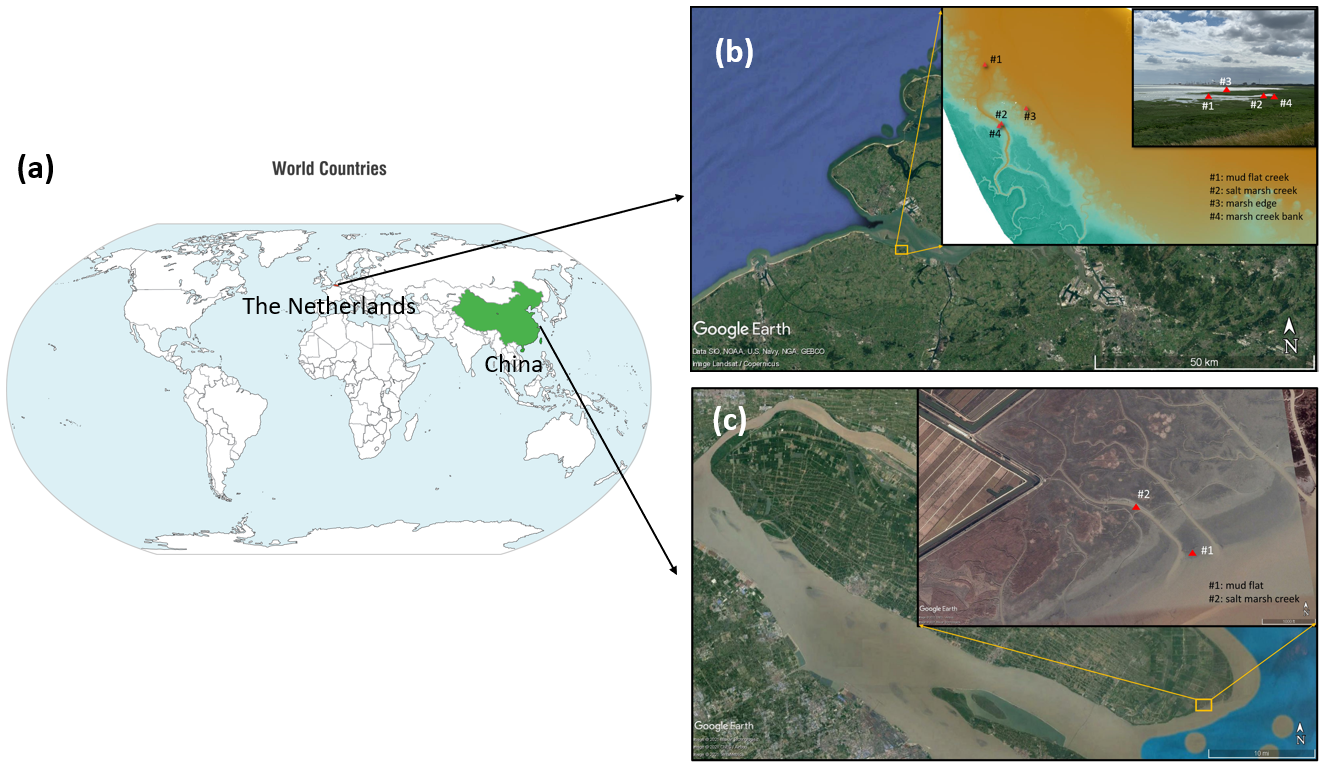Jianwei Sun1,2*, Xianye Wang2, Qing He2, Weiming Xie2, Jill Hanssen1, Bram van Prooijen1
1 Delft University of Technology
2 State Key Laboratory of Estuarine and Coastal Research (East China Normal University)
*corresponding author: This email address is being protected from spambots. You need JavaScript enabled to view it.
Introduction
The dynamic processes in tidal flats environment are considerably changing under the impacts of human interventions and climate change (Fagherazzi et al., 2020). In order to determine whether salt marsh can keep pace with these changing conditions, we identified the dynamic processes and also quantified the contribution of the sediment sources in an accreting and an eroding integrated tidal flat system. We found that the sediment routings are completely different in these two systems, and the sediment availability could be the main factor leading to the differences, which sheds light on the possible responses of tidal flat systems to the changing conditions due to human interventions and climate change in the future.
Methods
Two summer field campaigns were conducted in Paulina Saltmarsh (Fig. 1b) and in Chongming (Fig. 1c). Water depth, velocity, bed level change and SSC were measured at the same time in a marsh creek and in the adjacent mudflat in Chongming, and in the mudflat, the marsh creek, the marsh edge and the inner marsh in Paulina Saltmarsh.

Figure 1: (a) World map indicating the locations of the Netherlands and China; (b) Measuring locations in Paulina Saltmarsh in the Netherlands; (c) Measuring Locations in Chongming Island in China (Red triangles represent the exact measuring locations).
Results
The measurements show net accretion of the Chongming Island system and net degradation in the Paulina system. In both cases the tidal creeks play a key role. In Chongming, the sediment fluxes indicated that the creeks transport sediment, that was mainly from sea and was resuspended from the main channel, towards the marsh. This was even often the case for conditions with a net outflow of water through the creeks. In Paulina, the creeks transport sediment from the marsh towards the creeks. The comparison between an eroding system and an accreting system indicates the essential role of sediment availability for salt marshes in keeping pace with changing conditions due to human interventions and climate change (SLR).
References
Fagherazzi, S., Mariotti, G., Leonardi, N., Canestrelli, A., Nardin, W., & Kearney, W. S. (2020). Salt marsh dynamics in a period of accelerated sea level rise. Journal of Geophysical Research: Earth Surface, 125(8), e2019JF005200. https://doi.org/10.1029/2019JF005200










